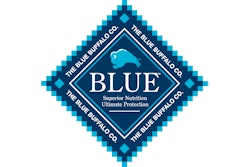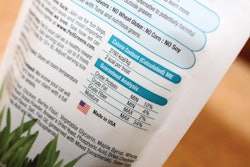
Before the February announcement that Blue Buffalo was being bought by human food giant General Mills, speculation had been rife that the pet food company might be an acquisition target. Perhaps CEO Billy Bishop even telegraphed the sale (or helped set it up) by expanding distribution of the Blue Life Protection Formula line into four large mass market retailers in August 2017.
At that time, Bishop said slower sales in pet specialty stores were one reason for the move. Blue Buffalo’s experience was not isolated; overall, pet food sales in the US pet specialty channel increased only 0.7 percent in 2017, according to GfK data, down from 2.6 percent growth in 2016 and 4.7 percent in 2015. GfK’s experts cited reasons such as the growing popularity of smaller dogs, an ongoing consumer desire for deals and the premiumization of pet foods spreading into other channels, particularly mass market.
That’s precisely what happened with Blue Buffalo, who followed the lead of pet food brands such as Nutro, Nature’s Recipe and Rachael Ray Nutrish (which launched into mass market as a superpremium line). The success of these and other natural, premium pet foods in grocery, club and discount stores has led to what Jared Koerten, senior research analyst for Euromonitor, called a “stunning and historic trend reversal”: for the first time in two decades, pet food sales growth in the US mass market channel outpaced growth in pet specialty in 2017. Euromonitor’s data projected growth of about 1.5 percent for pet specialty, higher than GfK’s figure but still less than the slightly over 2 percent growth projected for mass market. (See www.PetfoodIndustry.com/articles/6959.)
Of course, both channels’ growth in pet food sales pales in comparison to that of ecommerce, where Blue Buffalo and other pet food companies are seeing huge gains each year. So are online marketplaces, particularly Amazon, where pet food sales increased 47 percent from 2016 to 2017, said One Click Retail. In the US, ecommerce now accounts for at least 11 percent of US pet food sales, according to Packaged Facts, taking share away from pet specialty and other traditional outlets for buying pet food.

















